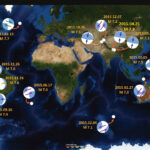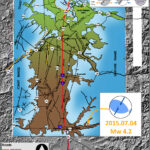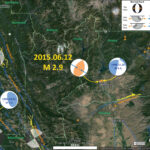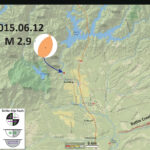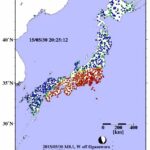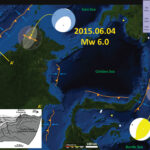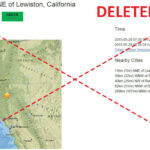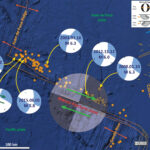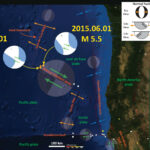Here I summarize the global seismicity for 2015. I limit this summary to earthquakes with magnitude greater than or equal to M 7.0. I reported on all but one of these earthquakes. Here are all the annual summaries: 2015 Earthquake…
Springfield Earthquake!
It took me a couple days to catch up with things, so I missed posting about this earthquake until now. We had a Mw = 4.2 earthquake northeast of Eugene on the morning of 2015.07.04. Here is the USGS web…
Redding Earthquakes: 1945-2015
There have not been many earthquakes since 1945 in this region. Below is a map that shows the largest earthquake as a M = 5.4 earthquake from 1998.11.26. Here is the USGS query that I used to create this map.…
Earthquake in Redding, CA!
We just had a small earthquake in Redding, California. The shaking was felt as far as 40 km from the epicenter, which was not deep (so probably in the North America plate). The focal mechanism shows that this was a…
Movies: Seismic Record of a Deep Izu-Bonin Earthquake
Scientists at the National Research Institute for Earth Science and Disaster Prevention have collected and processed seismic data from the High Sensitivity Seismograph Network Japan (Hi-net). They created movies of these data, in map view. Here is the page where…
Borneo Earthquake!
We had an extensional earthquake in northwest Borneo today. The region is an old accretionary prism, probably still active. Here is the USGS web page for this M 6.0 earthquake. Here is a map that shows where today’s earthquake is,…
Errata for Phantom Earthquakes: USGS
There have been a couple of reported earthquakes that have since been removed from the database. This happens when seismic waves are incorrectly interpreted by the computers, typically from the results of larger magnitude earthquakes. These large magnitude earthquakes can…
Blanco Fracture Zone: 2000 – 2015 Seismicity Animation
I put together an animation that includes the seismicity from 1/1/2000 until 6/1/2015 for the region near the Blanco fracture zone, with earthquake magnitudes greater than or equal to M = 5.0. The map here shows all these epicenters, with…
Blanco Fracture Zone Earthquakes!
This morning we had three earthquakes related to the Blanco fracture zone, a transform (shear) plate boundary. These earthquakes occurred quite a bit north of the bathymetric expression of the BFZ (though the M 5.8 is actually plotting closer to…
Historic Seismicity Animations: Izu-Bonin, Mariana: 1940 – 2015
Following up on the seismicity in the western Pacific, I put together a couple animations. My post about the deep mainshock (magnitude M = 7.8 ) is here. My second post has some aftershocks plotted (and some foreshocks), as well…

